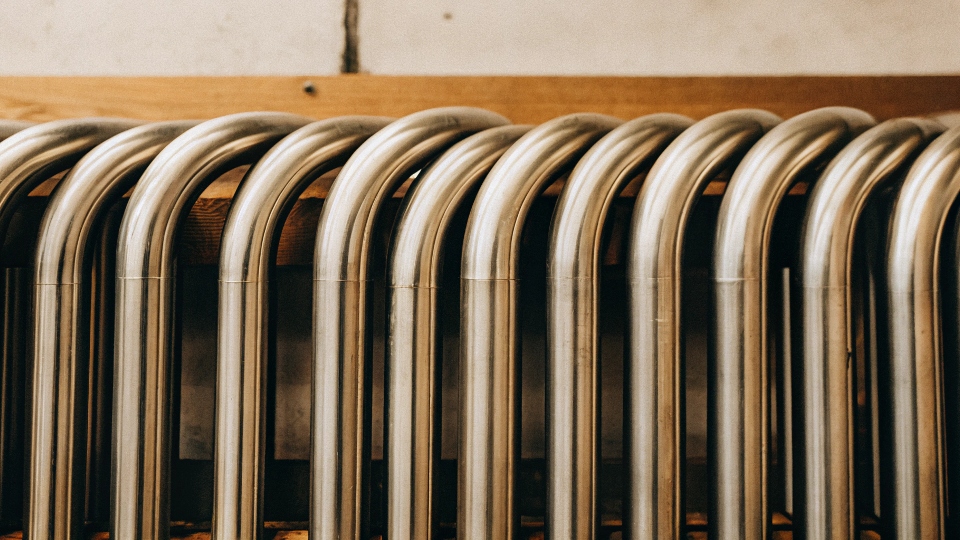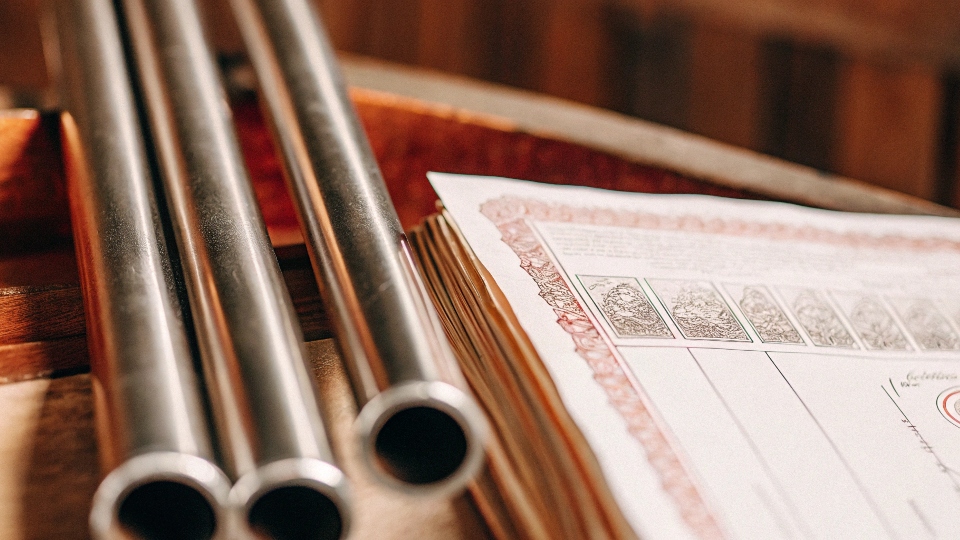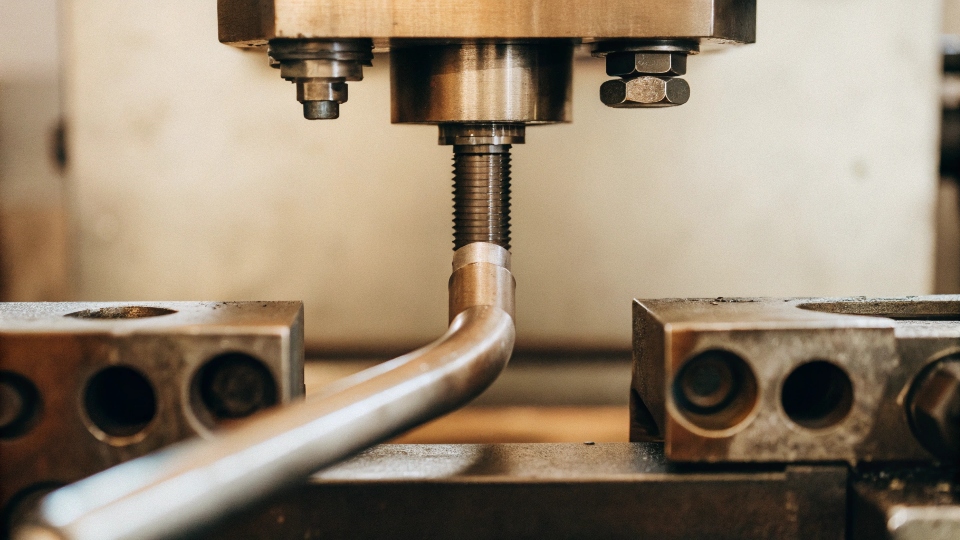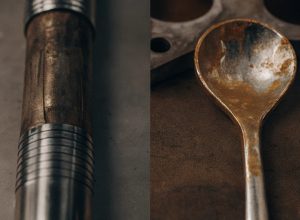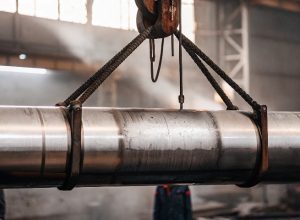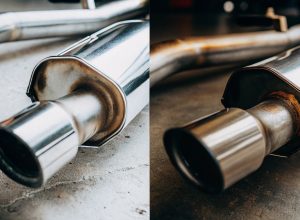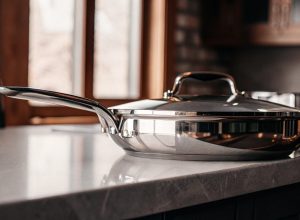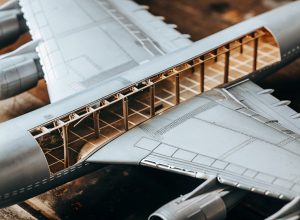¿Tiene problemas con los fallos de material en sus intercambiadores de calor? La corrosión constante y los tiempos de inactividad son costosos. Los tubos curvados en U de titanio SB338 Grado 12 ofrecen una solución fiable a largo plazo para entornos exigentes.
Sí, el tubo curvado en U de titanio SB338 Grado 12 es una opción excelente para proyectos que exigen una gran resistencia a la corrosión y un buen rendimiento a temperaturas elevadas. Sobresale en el procesamiento químico, desalinización1y generación de energía2 donde materiales como el acero inoxidable suelen fallar, garantizando la fiabilidad y eficiencia operativa a largo plazo.
Elegir el material adecuado parece una decisión arriesgada, porque lo es. Toda su empresa puede depender de ello. He trabajado con muchos responsables de compras como David, en Alemania, que tienen que equilibrar costes, calidad y entrega de componentes críticos. Sabe que elegir el tubo equivocado significa tener que hacer frente a paradas de producción y costosas sustituciones. Pero, ¿cómo puede estar seguro de que el titanio es lo que necesita? Veamos en qué destaca este material y qué debe tener en cuenta para tomar una decisión segura.
¿Cuáles son las principales aplicaciones de los tubos curvados en U de titanio en la industria?
Sus equipos se enfrentan a diario a duras condiciones. Un material inadecuado puede provocar costosos tiempos de inactividad y riesgos para la seguridad. Los tubos curvados en U de titanio están diseñados específicamente para funcionar donde otros metales no pueden.
Las aplicaciones clave son los intercambiadores de calor, condensadores y evaporadores en sectores exigentes. Entre ellos se incluyen el procesamiento químico, la generación de energía, la desalinización y las industrias de alta mar. Su excepcional resistencia a la corrosión los hace esenciales para manejar medios agresivos como agua salada, cloruros y diversos ácidos, garantizando fiabilidad y una larga vida útil.
Cuando trabajo con clientes, la conversación siempre empieza con la aplicación específica. Los retos de una planta química son muy diferentes de los de una instalación de generación de energía. Por ejemplo, en 2023, suministramos más de 1.200 tubos curvados en U SB338 Gr.12 para la modernización de un intercambiador de calor en una planta química europea. Su anterior instalación de acero inoxidable estaba fallando debido a la corrosión por cloruros. Tras 14 meses con nuestros tubos de titanio, la corrosión era nula y el rendimiento térmico había mejorado notablemente. Esta es una historia común. La pequeña adición de molibdeno y níquel en el titanio de grado 12 le confiere una resistencia superior a la corrosión por intersticios, que es un problema importante en entornos ricos en cloruros.
He aquí un sencillo desglose de dónde son más eficaces estos tubos:
| Sector industrial | Desafío principal | Cómo ayuda SB338 Gr.12 |
|---|---|---|
| Procesado químico | Corrosión por cloruros y ácidos | Excepcional resistencia a la corrosión por picaduras y grietas. |
| Generación de energía | Altas temperaturas y presión | Mantiene la resistencia y la integridad a temperaturas elevadas. |
| Desalinización | Corrosión por agua salada | Prácticamente inmune a la corrosión del agua de mar y las salmueras. |
| Petróleo y gas en alta mar | Ambientes ácidos (H2S) | Resiste el agrietamiento por tensión de sulfuro y la corrosión general. |
Para un responsable de compras como David, esto significa que puede especificar un material que cubra múltiples condiciones de servicio agresivas, lo que simplifica su proceso de aprovisionamiento.
¿Cómo se compara SB338 Gr.12 con otros materiales como el acero inoxidable?
El acero inoxidable suele parecer la opción más barata a primera vista. Pero en entornos corrosivos, puede fallar prematuramente, lo que conlleva unos costes de sustitución y mantenimiento mucho más elevados a largo plazo. El titanio de grado 12 ofrece un coste total de propiedad superior.
El grado 12 SB338 ofrece una resistencia a la corrosión mucho mayor, especialmente frente a los cloruros, y tiene una relación resistencia-peso superior a la de los aceros inoxidables comunes como el 316L. Esto lo convierte en la mejor opción para aplicaciones de alta temperatura y alta presión en las que la longevidad y la fiabilidad del equipo son fundamentales para un funcionamiento continuo.
A menudo me preguntan: "¿Merece realmente la pena invertir en titanio en lugar de acero inoxidable?". Mi respuesta siempre se basa en el rendimiento y el valor a largo plazo. Un caso reciente con uno de nuestros clientes lo ilustra perfectamente. Realizaron sus propias pruebas hidrostáticas en nuestros tubos en U SB338 Gr.12 para un nuevo diseño de intercambiador de calor compacto. Las pruebas demostraron que nuestros tubos mantenían la integridad estructural a 600 °C con caudales elevados. Los tubos de acero inoxidable 316L que probaron empezaron a mostrar signos de fluencia y deformación en las mismas condiciones. La reducción de peso también fue un factor importante. Como el titanio es 45% más ligero que el acero con una resistencia comparable, pudieron diseñar una unidad más eficiente y compacta. Esto es fundamental en aplicaciones donde el espacio y el peso son escasos, como en las plataformas marinas.
Veamos una comparación directa:
| Propiedad | SB338 Titanio de grado 12 | Acero inoxidable 316L |
|---|---|---|
| Corrosión por cloruros | Excelente resistencia | Propenso a la corrosión por picaduras y grietas |
| Resistencia a altas temperaturas | Mantiene la integridad hasta 600°C | Más débil, propenso a la fluencia a altas temperaturas |
| Densidad | ~4,51 g/cm³ | ~8,0 g/cm³ |
| Duración del servicio | Más de 20 años en servicio corrosivo | 5-10 años, a veces menos |
| Coste inicial | Más alto | Baja |
| Coste del ciclo de vida | Inferior (debido a la longevidad) | Más alto (debido a la sustitución/tiempo de inactividad) |
Para David, ver estos datos facilita su decisión. No solo está comprando un tubo; está invirtiendo en una producción ininterrumpida durante los próximos veinte años.
¿Qué normas de calidad y certificaciones debe buscar?
No todos los tubos de titanio se fabrican con la misma calidad. El uso de materiales no certificados puede provocar fallos en el equipo, incumplimiento de la normativa y graves incidentes de seguridad. Exija siempre la certificación adecuada para garantizar el rendimiento.
Debe buscar la certificación completa en ASTM B338 y ASME SB-338. Estas normas no son negociables, ya que definen los requisitos químicos, mecánicos y de fabricación necesarios para garantizar que los tubos cumplen los criterios de seguridad industrial y rendimiento de los intercambiadores de calor y condensadores.
No me canso de repetirlo: la trazabilidad lo es todo. Todos y cada uno de los tubos curvados en U que enviamos van acompañados de documentación completa, incluido un certificado EN 10204 3.1. Este documento rastrea el material hasta el lingote original, mostrando el análisis químico completo y los resultados de las pruebas mecánicas. Para mis clientes de industrias exigentes, como nuestros socios petroquímicos alemanes, esto no es sólo papel mojado. Es una garantía de seguridad y calidad. Durante las pruebas de aceptación en fábrica, comprueban estos documentos meticulosamente. También exigen ensayos no destructivos (END)3 informes. Por ejemplo, realizamos pruebas de ultrasonidos en cada tubo de acuerdo con SEP 1921 para detectar cualquier defecto interno que pudiera comprometer la integridad del tubo bajo presión. Este nivel de garantía de calidad es esencial. Garantiza que el material que recibe David es exactamente el que especificó y que funcionará como espera en su equipo crítico.
Normas clave a verificar:
- ASTM B3384 / ASME SB-3385: La especificación principal para tubos de titanio sin soldadura y soldados para condensadores e intercambiadores de calor.
- EN 10204 3.1: Un certificado expedido por el fabricante en el que se declare que los productos cumplen los requisitos del pedido, incluidos los resultados de las pruebas.
- Normas END (por ejemplo, SEP 1921, ASTM E213): Especifica los procedimientos de ensayo por ultrasonidos o corrientes de Foucault para garantizar que el tubo no presenta defectos.
No acepte nunca un material sin esta documentación completa.
¿Cómo asegurarse de que obtiene tubos curvados en U fiables y de precisión?
La propia curva en U es un punto de tensión importante en un tubo. Las técnicas de doblado inadecuadas crean graves debilidades, adelgazamiento de la pared y grietas que pueden provocar fallos. Trabaje con un proveedor que utilice procesos de fabricación avanzados.
Para garantizar la fiabilidad, su proveedor debe utilizar Doblado de mandriles controlado por CNC. Esta técnica sujeta la trompa desde el interior para mantener su forma y evitar la ovalidad. Crucialmente, también deben realizar un doblado posterior recocido al vacío tratamiento térmico para aliviar las tensiones residuales del proceso de doblado.
La calidad de un tubo curvado en U se determina mucho antes de instalarlo. Todo está en el proceso de fabricación. No basta con doblar un tubo. Utilizamos el curvado con mandril controlado por CNC con supervisión de la ovalidad en tiempo real. Un mandril es una varilla de acero que se introduce en el interior del tubo durante el curvado, lo que impide que se colapse o se deforme. Esto garantiza que el perfil circular del tubo y el grosor de la pared se mantengan uniformes, incluso en la parte más cerrada del curvado. Sin mandril, se obtiene un curvado débil y ovalado, propenso a agrietarse. Tras el curvado, el trabajo está a medias. El trabajo en frío introduce una importante tensión residual en el material, que lo hace quebradizo y susceptible de sufrir grietas por corrosión bajo tensión. Para solucionarlo, realizamos un ciclo de recocido al vacío a 720°C. Este proceso de tratamiento térmico recristaliza la estructura del grano, elimina todas las tensiones residuales y restaura la ductilidad y la resistencia a la corrosión del tubo. Uno de nuestros clientes del sector offshore descubrió que este proceso le ayudó a reducir los defectos de soldadura tras la instalación en 35%, ya que los tubos liberados de tensiones eran mucho más estables durante la soldadura.
Conclusión
SB338 Gr.12 es la mejor opción para aplicaciones exigentes. Para garantizar el éxito, debe verificar las normas de los materiales, las certificaciones y, especialmente, el proceso de fabricación de los codos en U del proveedor.
-
Explore el papel del titanio en la desalinización y su eficacia contra la corrosión del agua salada. ↩
-
Conozca las ventajas del titanio en la generación de energía, especialmente en entornos de alta temperatura y alta presión. ↩
-
Descubra cómo los END garantizan la integridad y seguridad de los tubos de titanio en aplicaciones críticas. ↩
-
Descubra la importancia de las normas ASTM B338 para garantizar la calidad y seguridad de los tubos de titanio. ↩
-
Explore los requisitos de la certificación ASME SB-338 y su importancia en las aplicaciones industriales. ↩

